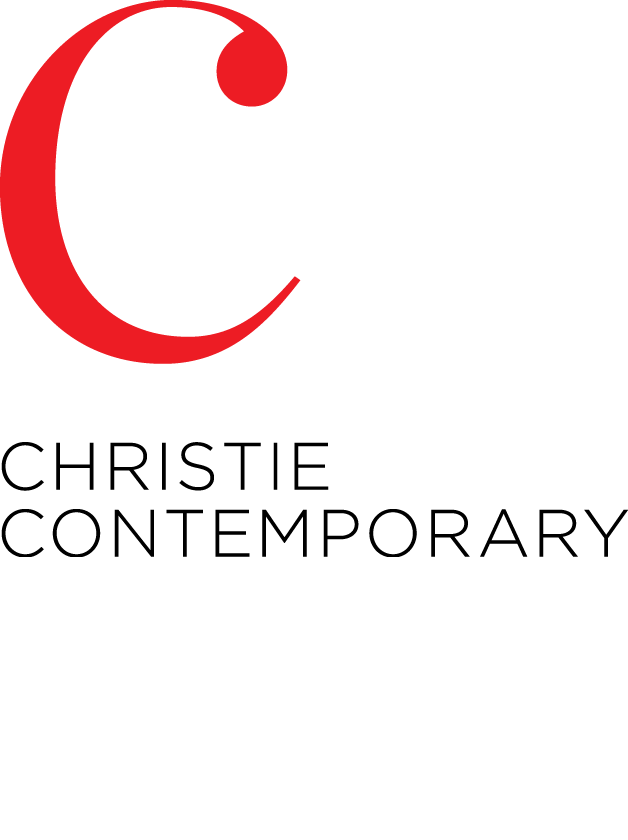CHRISTINE DAVIS Double Blind Stack B-12 (03.03.2017)
Christie Contemporary is pleased to present Free Assembly, opening Friday, July 21 and continuing through August 19, featuring the work of Christine Davis, Vlad Lunin and Adam Swica.
The photographic image once functioned as an instrument for prolonged observation, fixing artifacts of time captured by opportunity of light and location. Here, expanding beyond timely capture to additionally foreground process and construction, each artist builds with light before or after the lens to forge elusive temporal and spatial atmospheres.
Symbolist painter Odilon Redon, invoked by homage in Christine Davis’s Double Blind series, once remarked that his approach placed “the logic of the visible at the service of the invisible,” a fitting credo for each of these artists as they cultivate lens-based images in combination with a dimensional handling of light to generate photographs that exist only by virtue of that intervention. It would be impossible to ignore the circumstance of our image-saturated world as a propeller in these artists’ determinations around the medium or, more fully, what it represents, as news and social media, sometimes collapsing into one another, push an endless cascade of digital images into view, altering our perceptual attention. The photographic image has developed into a universal, visual messaging language, with analogue and digital forms in visual art responding to its evolving role. While acknowledging the “what-has-been” as a persistent photographic emblem, the invocation of the “real” is shifted in these works, declared as an idea rather than an objective.
For Christine Davis, the initial capture of hundreds of sunscapes over water photographed from her Brooklyn studio window provides raw material for compositing within the computer environment, where images are combined in pairs and then into stacks — each photograph may synthesize forty or fifty images — using standard program algorithms to coax unique fields generated by chance interactions. The textured interplay between image, light and scrim explored in her earlier projection work transfigures into pixels and interfaces here, condensing and diffusing, contracting and occluding, the simple geometry of sun, horizon line, and water pictured in the originating views. With a nod to Redon’s pastels, her similarly scaled images corral intensely luminous colour in hazy, atmospheric forms that sit just at the edge of something familiar.
ADAM SWICA Somewhere 16:50
With the work of Adam Swica, the familiar takes form through a constructed recollection, as every contour of the photographic frame is built using humble materials such as foil, plastic, wood, wire, paper — animated by light — to picture, with some immediacy, the sense of a remembered somewhere. As photographs, these sculpted views hover at the median between real and perceived to be real, between being read as recorded locations and memory objects, as each image subtly declares its own charade as a material contrivance—the creased rigidity of cinefoil, the abutted lengths of tinfoil, the slick stretching of plastic wrap. Yet these signposts to visual deception, hardly uncommon to the current dominion of photography, do little to interrupt or short-circuit the photographic impression, determining instead their tautological potential as place. They quietly persist as image conundrums that resist the imperative to solution.
The constructed view is also manifest in Swica’s abstract series under the title, Tumble. Building a 17’ x 11’ wall of profusely enmeshed paper fragments, some bearing traces of surrendered test prints, Swica shot details of the array, each image altered by the projection of filtered light. The dimensionality of the constructed field — its objectness — in combination with the flattened layers of colour — almost a paean to the digital — make the images’ origins difficult to reconcile. They flicker between active and still, porous and opaque, structural and dissolute, but despite their abstracted form, they ultimately maintain allegiance to the tangible, to the “what-has-been."
VLAD LUNIN 20140920
Vlad Lunin’s work utilizes photography’s “observable world” underpinnings as a launch point from which to particularize resonance while avoiding strict depiction. Shooting spontaneously in low light or complete darkness, Lunin works post-capture to excavate latent images through the continued application of digital presets (autotone, clarify), algorithms created as broadly available tools to improve the quality of a photographic image, corollary to the developing process in analogue photography. The repetitive mining of the image’s hidden proportions produces a dense, digital grain that abstracts — by trying to articulate — the pictorial, wherein the act of rendering itself becomes the image.
Over a century ago, the advent of analogue photography could be said to have liberated painters from their obligation to record the real world; now, the proliferation of real world images has similarly precipitated an expanded field of inquiry in photography. For these artists, it is rather less about taking a photograph than about taking a photograph further.




